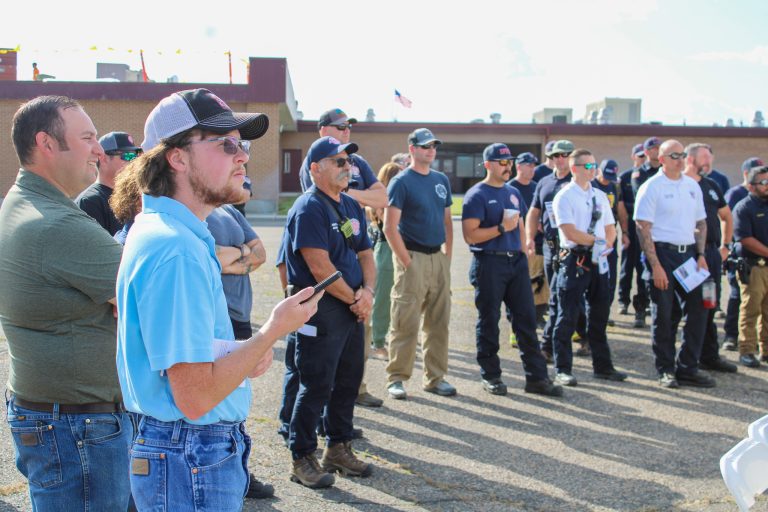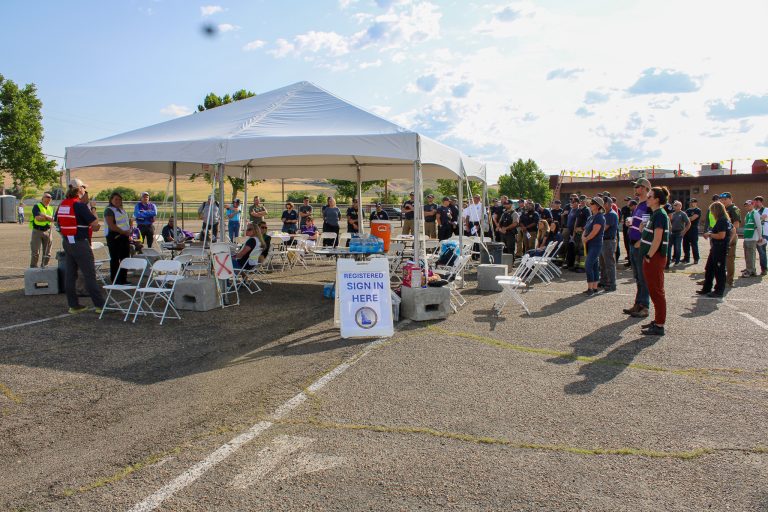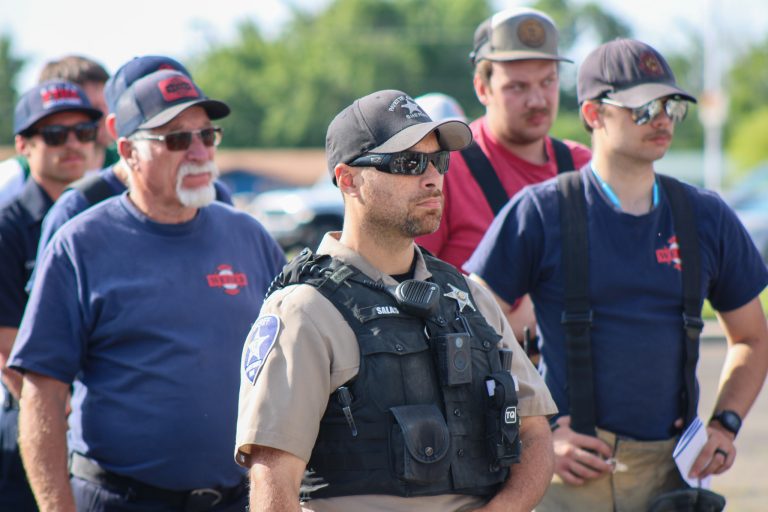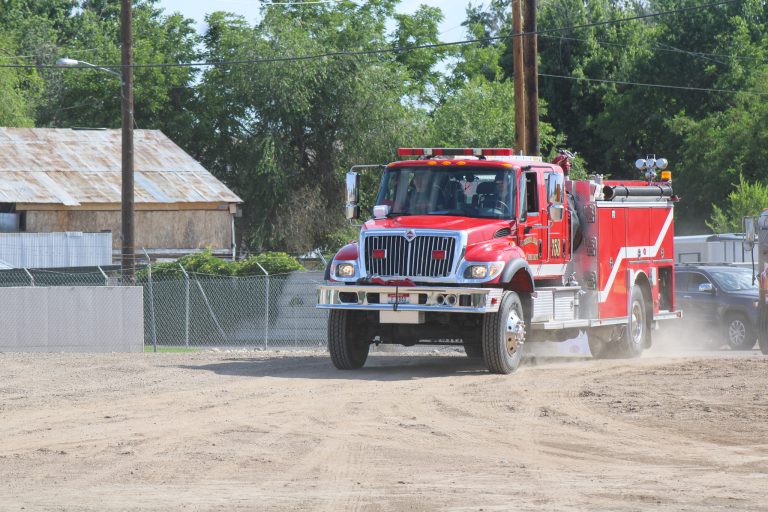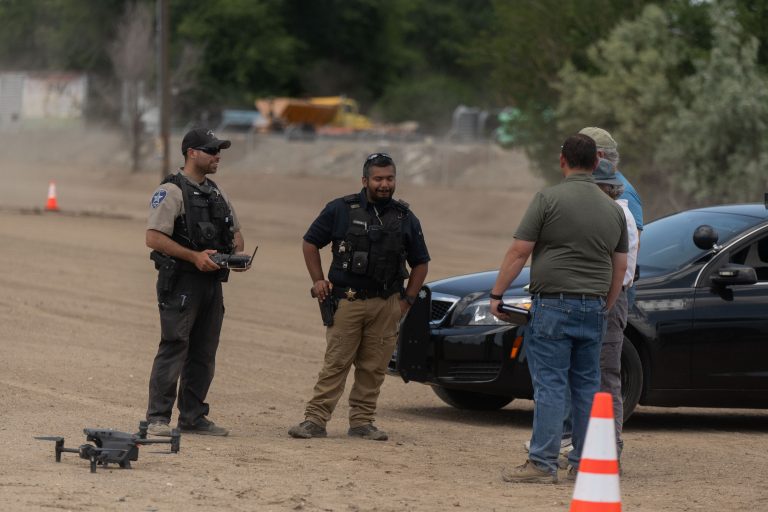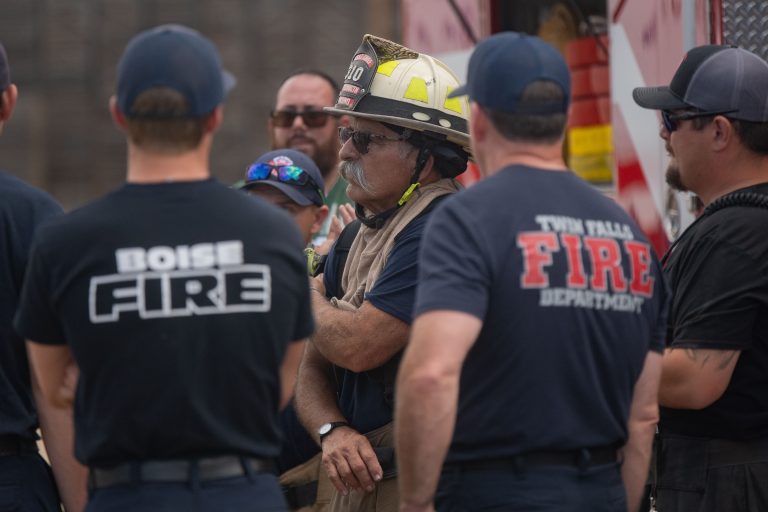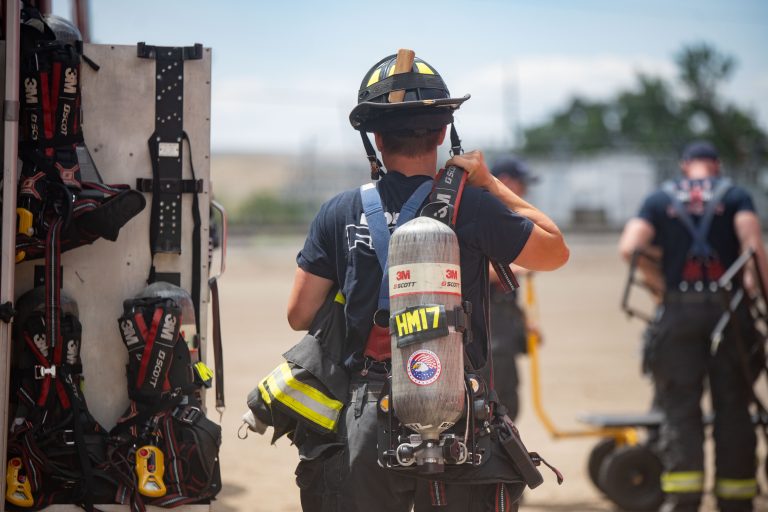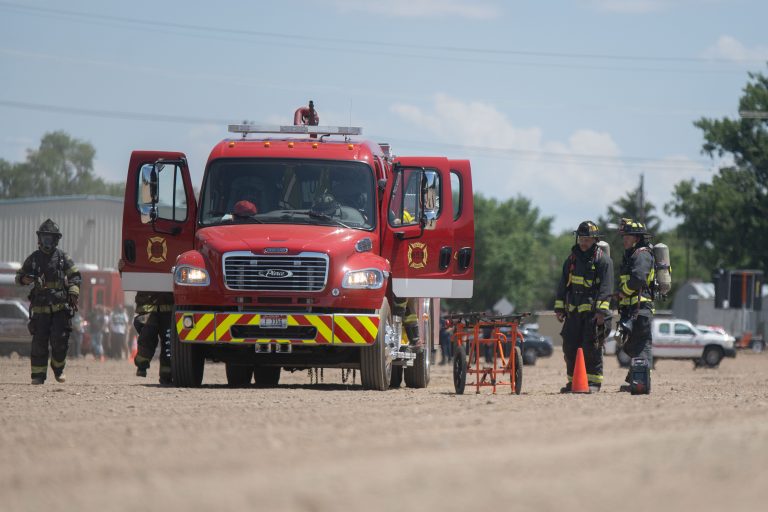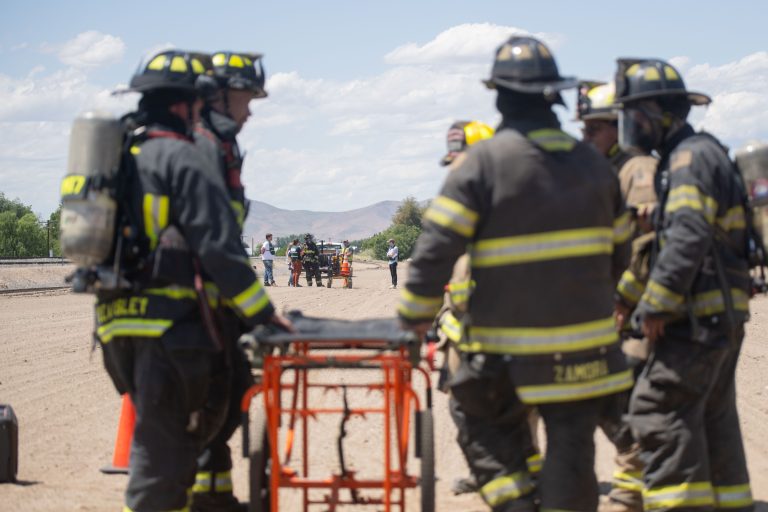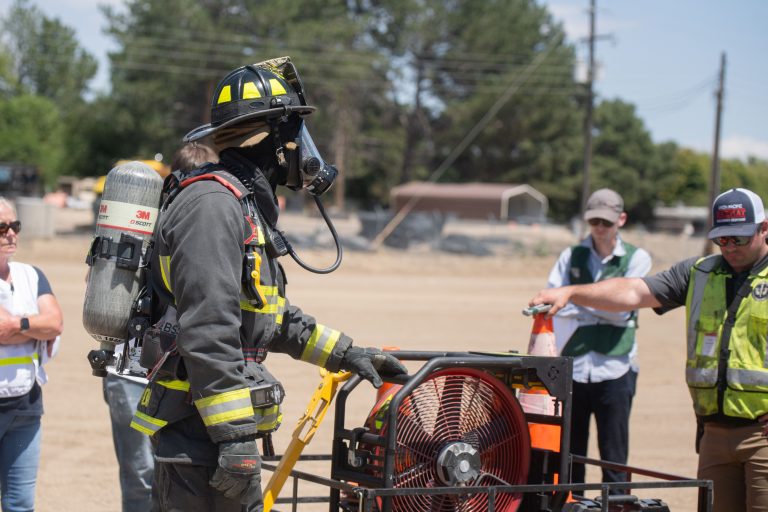Category: News & Updates
Recovery Resources After a Wildfire

Wildfires can devastate entire communities by damaging homes, businesses, and farmland in their path. In the wake of these events, emergency managers often become the first point of contact for community members seeking recovery assistance.
While the Federal Emergency Management Agency (FEMA) often plays a central role in disaster support, there are several additional federal programs that may be available to help individuals, families, agricultural producers, and small businesses recover. The resources below may be useful for jurisdictions impacted by wildfire.
Small Business Administration (SBA) Disaster Loans
The U.S. Small Business Administration (SBA) may provide low-interest disaster loans to individuals, businesses, and nonprofits impacted by wildfire. These include:
- Homeowners and renters
- Businesses of all sizes
- Private nonprofit organizations
- Small agricultural cooperatives
These loan programs become available following a federal disaster declaration, usually requested by the Governor after certain thresholds are met. Emergency managers play an important role in gathering local damage data to support these declarations.
Once approved, SBA loans can help cover repair costs, replace property, and restore operations. Learn more at the SBA Disaster Assistance page.
U.S. Department of Agriculture Disaster Assistance Programs
The U.S. Department of Agriculture (USDA) offers a wide range of support for farmers, ranchers, rural communities, and landowners affected by wildfires.
Disaster Resource Center
The USDA’s Disaster Resource Center provides centralized information on how to prepare, recover, and build long-term resilience after a disaster. Because wildfires often span public and private land, USDA firefighting and recovery efforts extend beyond national forests to assist landowners, producers, and communities across the landscape.
Farm Service Agency Assistance Programs
The Farm Service Agency (FSA) Disaster Assistance Programs provide targeted support for agricultural producers recovering from wildfire and other disasters.
Livestock Assistance
- Livestock Forage Disaster Program (LFP): Offers payments to eligible livestock producers for grazing losses caused by drought or wildfire.
- Livestock Indemnity Program (LIP): Provides financial relief for abnormal livestock deaths due to wildfire or adverse weather.
- Emergency Assistance for Livestock, Honeybees, and Farm-Raised Fish (ELAP): Covers losses not included in other livestock disaster programs, such as those caused by fire, disease, or weather.
- Emergency Livestock Relief Program (ELRP): Provides relief to livestock producers with approved 2021 LFP applications related to drought or wildfire. No separate application required.
Farm Loans
- Emergency Loan Program: Provides low-interest loans to help producers recover from production or physical losses caused by disasters.
- Disaster Set-Aside Program: Allows eligible producers with existing FSA loans to defer one year’s loan payment in federally declared disaster areas.
Farmland Recovery
- Emergency Conservation Program (ECP): Helps repair farmland and implement conservation measures during severe drought or post-wildfire.
Learn more. - Emergency Forest Restoration Program (EFRP): Assists landowners in restoring non-industrial private forests damaged by wildfire.
Learn more.
Crop and Tree Loss
- Noninsured Crop Disaster Assistance Program (NAP): Assists producers of non-insurable crops when losses are caused by natural disasters, including wildfire.
- Tree Assistance Program (TAP): Provides financial aid to orchardists and nursery growers to replace trees, bushes, or vines damaged by fire or other disasters.
You can also download a printable overview of USDA disaster programs here: USDA Disaster Assistance Brochure (PDF)
Natural Resources Conservation Service – Disaster Recovery
The Natural Resources Conservation Service (NRCS) helps farmers, ranchers, and communities recover from wildfires and other disasters through both technical and financial assistance.
Environmental Quality Incentives Program
Environmental Quality Incentives Program (EQIP) helps producers plan and implement conservation practices on land impacted by wildfire. Eligible land includes cropland, rangeland, and non-industrial private forestland. Available practices may include:
- Immediate soil erosion protection
- Minimizing spread of noxious or invasive plants
- Water quality protection
- Restoration of livestock infrastructure needed for grazing
- Emergency animal mortality management
Technical Assistance
NRCS conservationists can provide expert guidance to help producers and communities rebuild and strengthen their land. Services may include:
- Erosion prevention and control
- Soil protection and health restoration
- Directional water flow planning to avoid future flooding
- Preventative wildfire strategies
- Post-fire rehabilitation planning
- General conservation planning
Emergency Watershed Protection Program
Emergency Watershed Protection (EWP) Program supports communities recovering from watershed damage caused by wildfires, floods, drought, and other disasters. Through the EWP, NRCS can help reduce hazards to life and property by supporting the following:
- Debris removal from stream channels, bridges, and culverts
- Reshaping and stabilizing eroded streambanks
- Repairing damaged drainage systems and levees
- Reseeding burned or eroded areas to prevent further degradation
For those jurisdictions with questions, need help reporting disaster impacts, or want to connect with available resources, please reach out to your IOEM Area Field Officer or Jarod Dick at jdick@imd.idaho.gov.
Full-Scale HazMat Exercise Brings Together Local, State, and Federal Partners
On June 13, first responders and emergency managers from across southwest Idaho came together in Weiser for a full-scale hazardous materials exercise designed to test every facet of our state’s preparedness. This large-scale event, hosted by the Idaho Office of Emergency Management (IOEM) in coordination with Washington and Payette counties, brought together local, state, and federal partners to simulate a complex HazMat incident and train under conditions that closely mirror a real-world emergency.
The scenario centered around a hazardous chemical release from a rail tanker car caused by a faulty valve. Crews were tasked with identifying the substance, establishing safety zones, and containing the spill, all while working alongside dozens of other agencies in real time. Unlike tabletop drills, this full-scale exercise involved actual movement of responders, equipment, and vehicles, creating the most realistic training environment possible.

First responders from Washington and Payette counties led the initial response. They were challenged to complete a scene size-up, identify the hazardous material, establish unified command across county lines, and respond to a simulated civilian exposed to the chemical. These local agencies routinely manage daily emergencies and perform critical life-saving functions. However, this exercise was designed to push beyond local capabilities and required a higher level of coordination with private sector partners, the rail company, and state and federal agencies.
Throughout the exercise, crews monitored evolving conditions and worked to maintain control of the scene. Once state resources arrived, Idaho’s Regional Response Teams integrated with the unified command to quickly and safely develop a plan to address the faulty valve.
Participating agencies represented a wide range of local, state, federal, and private sector partners. Among them were FEMA’s National Exercise Division, IOEM, Washington and Payette County sheriff’s offices and emergency management teams, Payette County Paramedics, and multiple fire departments including Weiser, Payette, New Plymouth, Fruitland, Boise, Idaho Falls, and Twin Falls.
Other key partners included the Idaho Department of Environmental Quality, Idaho Transportation Department, State Communications (StateComm), Southwest District Health, Western Idaho Healthcare Coalition, and Gem County Emergency Management. The U.S. Environmental Protection Agency, U.S. Department of Homeland Security’s Cybersecurity and Infrastructure Security Agency (CISA), the United States Army, and the Army Reserves were also involved as federal observers and participants.
Private sector partners such as Union Pacific Railroad, Amalgamated Sugar Company, and Graymar Environmental played important roles in supporting the exercise and providing realistic training conditions.
Evaluators were stationed throughout the site, observing how the exercise played out from multiple angles. Each evaluator followed a detailed exercise evaluation guide and documented real-time decision making. Their observations will be compiled into an after-action report and reviewed in a virtual meeting this August to identify strengths, gaps, and takeaways for each agency involved.
IOEM led the design, planning, and coordination of the event, with staff embedded in multiple aspects of the day’s activities, from evaluation and safety to public information. The exercise followed months of planning, including the 2024 Regional Interagency Steering Committee Federal HazMat Seminar and a series of pre-exercise workshops and tabletops.
Exercises like these help IOEM identify both strengths and areas where the state and local first responders can improve before a real incident puts lives and infrastructure at risk. They are also a reminder that relationships and regular practice help strengthen Idaho’s emergency preparedness.
National Lightning Safety Awareness Week

As National Lightning Safety Awareness Week approaches, the Idaho Office of Emergency Management (IOEM) urges all Idahoans to stay informed and take steps to protect themselves from the dangers of lightning. This year’s awareness week runs from June 22 through June 28, 2025.
Lightning is a powerful and often underestimated natural event. According to the National Weather Service, lightning strikes kill an average of 20 people each year in the United States and injure many more. Although most lightning victims survive, people struck by lightning often report a variety of long-term, debilitating symptoms.
Lightning also poses significant risks to property and the environment. In Eastern Idaho, nearly half (47%) of wildfires between 2000 and 2020 were caused by lightning. These fires often occur during dry seasons, increasing risk and danger.
The best way to stay safe during a thunderstorm is to plan ahead. There is no safe place outside during a thunderstorm, so taking action early is key.
Safety Tips Before, During, and After Thunderstorms:
Before Thunderstorms and Lightning:
- Know Your Risk: Thunderstorms can happen year-round and at any hour. Be aware of your area’s risks and create an emergency plan.
- Stay Informed: Sign up for community warning systems and listen to Emergency Alert System (EAS) and NOAA Weather Radio alerts. Be sure to also follow regional NWS offices, local and state emergency management offices, and local first responders on social media for daily updates.
- Prepare Your Property: Trim trees that might fall on your home and consider installing surge protectors, lightning rods, or a lightning protection system.
During Thunderstorms and Lightning:
- When Thunder Roars, Go Indoors: Seek shelter in a building immediately. Remain inside for at least 30 minutes after hearing the last sound of thunder.
- Use Vehicles as Shelter: If no buildings are accessible, a hard-topped metal vehicle with windows rolled up can offer protection.
- Indoor Safety: Avoid using plumbing or landline phones, as electricity can travel through these systems. Do not touch anything that is plugged into an electrical outlet.
- Water Safety: If swimming, boating, or near a body of water, move to land and seek shelter immediately. If a car is the only option, stay inside but avoid touching anything metal.
- Flood Safety: Avoid flooded roadways. Remember, “Turn Around Don’t Drown” – just six inches of fast-moving water can knock you down, and one foot can sweep away your vehicle.
- Lightning Victims: If someone is struck by lightning, call 911 immediately. Lightning victims do not carry an electrical charge and are safe to touch.
After Thunderstorms and Lightning:
- Stay Updated: Listen to authorities and weather forecasts to determine when it is safe to go outside. Wait at least 30 minutes after the last sound of thunder.
- Report Hazards: Watch for downed power lines and fallen trees and report them to the appropriate authorities.
IOEM encourages everyone to create and review safety plans and educate family members about the precautions to take before, during, and after a thunderstorm. By staying informed and prepared, we can build a safer, more resilient Idaho.
Preparedness Includes Pets

When preparing for an emergency, don’t forget about your pets! June is Pet Preparedness Month, and it serves as a good reminder to make sure your emergency plans include your furry, feathered, or scaled family members.
Pets rely on us for safety and care especially during a disaster. In some emergencies, you may need to evacuate quickly or become separated from your animals. Idaho Office of Emergency Management (IOEM) encourages pet owners to take time now to prepare, so they’re ready to act when it matters most.
Make a Plan For Your Pet
- Know Where to Go: Not all shelters or hotels accept animals. Research pet-friendly locations ahead of time and keep a list of places—like boarding facilities, friends’ homes, or pet-welcoming hotels—you can turn to in a disaster.
- Create a Buddy System: Arrange with a trusted friend, neighbor, or relative who can help care for or evacuate your pet if you’re not home.
- Microchip and Update ID: Make sure your pet is microchipped and wears a collar with current identification tags. Don’t forget to keep your contact information, along with an emergency out-of-area contact, up to date.
- Practice Your Plan: Include your pet in emergency drills so they get used to their crate or carrier. The more familiar they are with the routine, the easier it will be in a real emergency.
- Stay Connected with Local Resources: Contact your local emergency management office or animal shelter for guidance specific to your community.
What to Pack in a Pet Emergency Kit
Just like you would for yourself, having an emergency kit ready can make all the difference. Put together a portable, easy-to-carry container with the essentials your pet will need.
Some items to include:
- Food and water for at least several days
- Bowls, litter/litter pan, and manual can opener (if using canned food)
- Medications and medical records in a waterproof container
- A basic pet first aid kit
- Leashes, harnesses, collars with ID tag, and/or secure carriers to help prevent escape
- Pet wipes, shampoo, and other hygiene items suited for your pet in case they need cleanup
- Sanitation supplies, such as litter and litter box (if appropriate), newspapers, paper towels, plastic trash bags, etc.
- Current photos of you and your pet in case you’re separated
- Details on feeding, behavior, and vet contact information
- Pet beds, toys, or comfort items, if easy to carry
Don’t wait until an emergency is underway to think about your pet’s safety. Taking time to plan now helps make it easier to keep your entire household (pets included) safe and ready to respond.
Stay Safe Around Swift Water

As summer temperatures rise across Idaho, many residents head to rivers, lakes, and streams to cool off and enjoy the outdoors. While these activities can be refreshing and fun, it’s critical to stay alert and aware around swift water – because a relaxing day can turn dangerous in an instant.
The Idaho Office of Emergency Management (IOEM) reminds all Idahoans to be “water aware” this summer. Melted snowpack from higher elevations continues to flow into waterways, increasing both the speed and volume of rivers and streams. This runoff water is not only fast-moving but also extremely cold, even on the warmest days. These factors can create hazardous swimming conditions for even the most experienced swimmers.
Swift water is powerful and can be unpredictable. Beneath the surface, hidden dangers like rocks, tree branches, and debris can trap swimmers. That’s why it’s important to know what you’re getting into and take steps to protect yourself and your loved ones.
Know Before You Go
There are several safety precautions you can take to enjoy Idaho’s lakes and rivers more safely:
- Always swim with a buddy, not alone. Having someone nearby can be the difference between a close call and a tragedy in the event of an emergency.
- Do not jump in after someone who has fallen into swift water. Call 911 and attempt to reach the person with a long object or throw them a flotation device instead of entering the water yourself.
- Wear a life jacket every time you are in, on, or near water. Even if you don’t plan to swim, a U.S. Coast Guard-approved life jacket can help keep you afloat if you fall in or are caught off guard by current.
- Avoid using alcohol or drugs before or during water activities. These substances impair your ability to react quickly, think clearly, and maintain balance.
- Understand how cold water can affect your body. Water fed by snowmelt can be shockingly cold, even in summer. Just a few minutes of exposure can lead to cold shock, muscle cramps, or hypothermia.
Stay Informed
Before visiting a waterway, check for any warnings or updates from local emergency officials, park rangers, or first responders. They often have the most up-to-date information about water conditions, closures, or hazards in the area.
Following their guidance can help you avoid dangerous situations and make sure your trip is a safe one.
Pay Attention to Changing Conditions
Lakes, rivers, and streams can appear calm on the surface while hiding serious risks.
- Be aware that currents can be strong, even if they’re not visible. What looks like a peaceful flow may have a strong undercurrent that is difficult to escape.
- Look out for hazards hidden beneath the water. Natural bodies of water can contain rocks, branches, sudden drop-offs, or debris that pose unexpected dangers.
- Stay away from dams and spillways. Water conditions around these structures can change quickly and become deadly without warning.
Be Prepared and Build Skills
- Always supervise children and inexperienced swimmers. Designate a responsible adult to serve as a “Water Watcher.”
- Make sure everyone in your group knows how to swim. Enroll yourself or your children in certified swimming lessons. It’s one of the best ways to build water confidence and prevent drownings.
Staying water aware and prepared can help prevent a tragedy. Before you head out for a day of fun near the water, take a few minutes to review these safety tips and talk with your family or group about how to respond in an emergency.
Additional Resources and Information:
PIER Team Builds Communication Readiness at Gowen Field
The right information to the right people at the right time – that’s what the Idaho Public Information Emergency Response (PIER) Team works toward every day. Last week, PIER Team members met at Gowen Field in Boise for their quarterly meeting, coming together to build the connections that make clear communication possible during emergencies.
While recent meetings focused on crisis communication training and emergency exercises, this one was different. It gave team members a chance to get to know each other in a more relaxed setting. In emergency management, there’s a saying – you don’t want to meet someone for the first time at a disaster. This meeting put that idea into action by helping PIER Team members learn the face behind the name and build trust before a crisis hits.
Attendees heard from Maj. Gen. Timothy Donnellan, the Adjutant General of the Idaho Military Division (IMD) and Lt. Col. Chris Borders, Public Affairs Officer for the Idaho National Guard. Both highlighted the importance of teamwork and communication ahead of emergencies. Borders also shared a brief history of Gowen Field and offered insight into how IMD operates, including the various programs and teams it houses.
After the meeting, the group toured Gowen Field and got a close-up look at military equipment like the A-10 Thunderbolt II, Bradley Fighting Vehicle, Black Hawk helicopter, and M1 Abrams tank. The tour offered a behind-the-scenes view of the tools that may be used in large-scale emergency responses and sparked conversations that help agencies work better together.
Participants included public information officers and communicators from the Department of Health and Welfare, Department of Labor, Department of Fish and Game, Department of Agriculture, local public health districts, the Ada County Highway District, Bannock County, and more.
Under Idaho Executive Order 2022-04, the PIER Team is made up of representatives from each state agency. The team exists to provide the right information to the right people at the right time during a State Disaster Declaration or major events. The group supports the IRC in public information efforts and assists local jurisdictions or state agencies in collecting, verifying, and disseminating important information to the public.
The PIER Team meets quarterly for group updates, training, and workshops.
For those interested in learning more about the Idaho PIER Team or attending an upcoming meeting, please contact Tristan Lewis at tlewis@imd.idaho.gov.
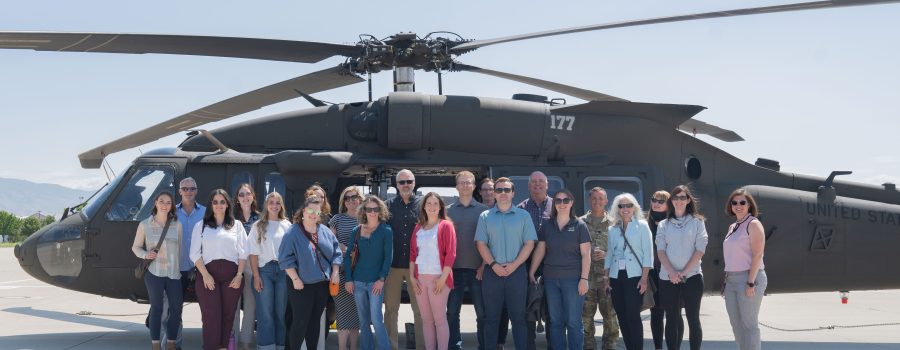
Youth Leaders Build a More Prepared Idaho
Two Idaho students are proving that leadership in emergency preparedness can start early. As members of FEMA Region 10’s Youth Preparedness Council (YPC), Paige from Boise and Allison from Meridian have spent the past year leading hands-on projects that help build a stronger and more prepared Idaho.
Paige, a high school senior, wrapped up her time on the council with a project aimed at one of Boise’s most underserved communities. She led hands-only CPR training at the Interfaith Sanctuary, the city’s largest homeless shelter. With support from the Idaho Office of Emergency Management (IOEM) and Central District Health (CDH), Paige coordinated two training sessions that reached 20 participants, ranging from children to seniors. Despite some unexpected challenges, she and her team adapted on the spot to make sure everyone left feeling confident in their new skills.
Throughout the year Paige also organized a coin drive to support wildfire recovery, created pet preparedness flyers, participated in Disaster Preparedness Day, and shared earthquake safety tips during a STEM night at a local elementary school.
Meanwhile, in Meridian, high school sophomore Allison took an artistic route. She wrote and illustrated an original picture book, The Adventures of Polly the Porcupine, to teach kids ages 5 to 8 how to “Drop, Cover, and Hold On” during an earthquake. The story follows Polly, a shy porcupine who finds courage through learning how to stay safe. Allison plans to distribute the book to more than 20 schools before the next school year and hopes to reach even more families through libraries, hospitals, and community story times.
Beyond the book, Allison has created hazard guides for her classmates, helped evaluate her school’s earthquake drill, and even put her training to use during a real power outage on Christmas Eve.
Paige and Allison recently presented their accomplishments at a Youth Preparedness Council Project Outcomes event alongside other FEMA Region 10 representatives. IOEM Planning Section Chief Maija Reed attended and was impressed by the creativity and attention to detail each YPC member brought to their projects.
“It’s exciting to see these young leaders stepping up and making a real difference,” said Reed. “Their passion and creativity are exactly what we need in emergency preparedness!”
YPC brings together teens from across the country who are passionate about community preparedness. Members are selected for their commitment to public service and leadership potential. During their one-year term, they collaborate virtually to develop projects that promote preparedness locally and nationally, while connecting with leaders from FEMA, federal agencies, and national nonprofits to grow their skills and impact.
Idaho Coordinated Webinar Adopted into FEMA Curriculum to Boost Private Sector Preparedness
The Idaho Office of Emergency Management (IOEM) is proud to announce its webinar series has been officially adopted by the Federal Emergency Management Agency (FEMA) as part of its national training curriculum.
The Private Sector Preparedness Response and Recovery (PSPR2) Seminar Series, titled “Mass Casualty Impact and Recovery,” has been integrated into FEMA’s updated Active Shooters (IS 907.a) course, offered through the Emergency Management Institute. This move demonstrates the importance of collaboration between businesses and government agencies when responding to and recovering from mass casualty events.
Originally developed through a multi-state partnership, the 90-minute seminar brings together public and private sector experts to share real-world experience, practical tools, and lessons learned. Designed for businesses and organizations working to strengthen their emergency plans, the seminar provides tangible takeaways for navigating the complexities of mass casualty events.
The PSPR2 seminar was developed in collaboration with the Albertsons’ Crisis and Business Continuity Team, the Cybersecurity and Infrastructure Security Agency (CISA), and the Oregon Department of Emergency Management.
Idaho’s Public-Private Partnerships Program builds strong connections between businesses and the government, helping make sure communities are better prepared to manage crises. These partnerships enable the coordinated sharing of resources, expertise, and networks – making disaster response and recovery more effective and efficient.
IOEM’s role in the seminar series reflects the office’s broader commitment to strengthening Public-Private Partnerships across Idaho and beyond.
“We know we’re stronger when we work together,” said Jon Hanian, IOEM’s Public-Private Partnership Program Manager. “Bringing businesses to the table early and often allows us to build trust, share resources, and respond more effectively when disaster strikes.”
To learn more about IOEM’s Public-Private Partnerships Program, contact Jon Hanian at jhanian@imd.idaho.gov.
Idaho Office of Emergency Management to Conduct Full-Scale HazMat Exercise in Weiser
Idaho Office of Emergency Management to Conduct Full-Scale HazMat Exercise in Weiser
BOISE, ID – The Idaho Office of Emergency Management (IOEM), in coordination with Payette and Washington counties, will conduct a full-scale hazardous materials (HazMat) exercise on Friday, June 13, 2025, in Weiser, Idaho. The exercise will begin at 8 a.m. and is expected to conclude by 5 p.m. Activities will take place at multiple locations throughout Weiser, including the Vendome Event Center, Weiser High School, and the Amalgamated Sugar Company.
The exercise is part of IOEM’s ongoing commitment to strengthening emergency preparedness and response capabilities throughout the state. It aligns with the Federal Emergency Management Agency’s (FEMA) National Preparedness Goal, which emphasizes building and sustaining core capabilities to prevent, protect against, mitigate, respond to, and recover from all hazards.
Residents and visitors in the Weiser area may notice the following during the exercise:
- A visible presence of emergency vehicles and personnel throughout the community
- Simulated smoke used as part of the exercise scenario
- Clear signage posted near the exercise area indicating “Emergency Training in Progress
No real hazardous materials will be used or released during the training. There is no threat to public health or safety.
This full-scale exercise provides first responders with a valuable opportunity to test and evaluate response protocols in a realistic, controlled setting. It also helps enhance coordination and communication between local and state agencies.
###
The Idaho Office of Emergency Management is part of the Idaho Military Division. The services we provide are to facilitate emergency management in Idaho, and to assist neighboring states. The women and men of this Division are dedicated to their mission of protecting the lives and property of the people of Idaho, as well as preserving the environmental and the economic health of Idaho.
Idaho Water & Wastewater Sector Security Summit
Water is one of Idaho’s most precious resources, and protecting our state’s water and wastewater systems is key to maintaining the health and safety of our communities. The State of Idaho is hosting the Idaho Water & Wastewater Sector Security Summit on June 17 in Boise to discuss emerging threats and share best practices for protecting these vital systems.
This full-day summit will bring subject matter experts from the government and private sector together to share industry best practices, lessons learned, and services available to protect Idaho’s most precious resource. Sessions will focus on strengthening cybersecurity, enhancing physical security, and building system resilience.
Key topics include:
- Protect water systems from digital threats and cybersecurity breaches targeting critical infrastructure.
- Best practices for hardening defenses to safeguard water and wastewater facilities from unauthorized access and disruptions.
- Participate in a hands-on workshop and tabletop exercise focused on using innovative technologies and strategies to increase the security and resilience of our systems.
This summit is open to both public and private sector water and wastewater professionals, emergency managers, and local government officials. Participants can register for either in-person or virtual attendance. Attendance is free of charge.
Please note: due to the sensitive nature of a session focused on emerging threats against water systems, that session will not be available to virtual attendees.
Idaho Water & Wastewater Sector Security Summit
June 17, 2025
9:00 a.m. – 4:30 p.m.
Idaho Chinden Campus, Les Bois Conference Room (Idaho Chinden Campus 11311 W. Chinden Blvd Boise, ID 83714)


